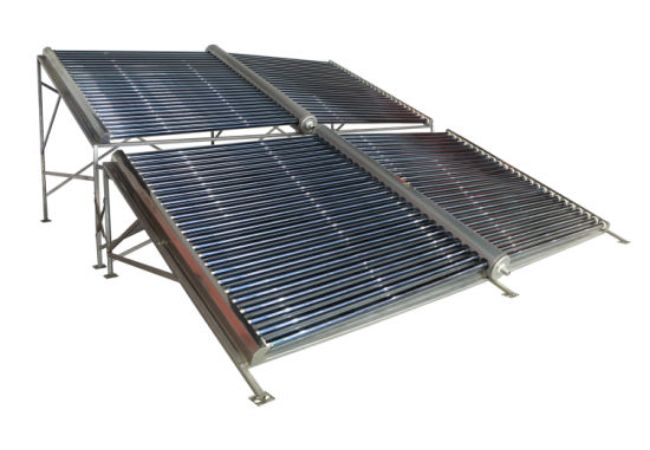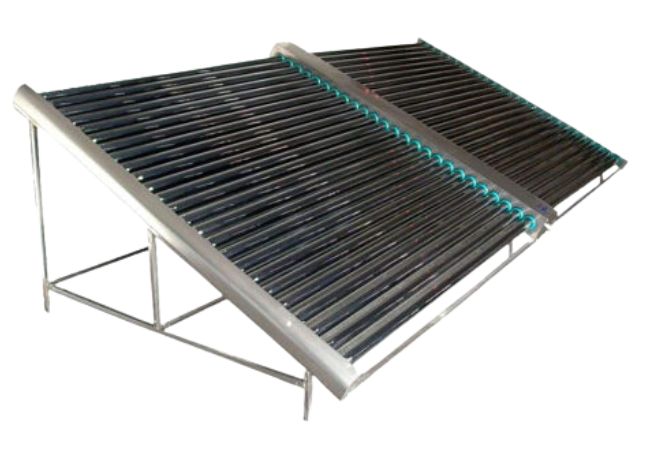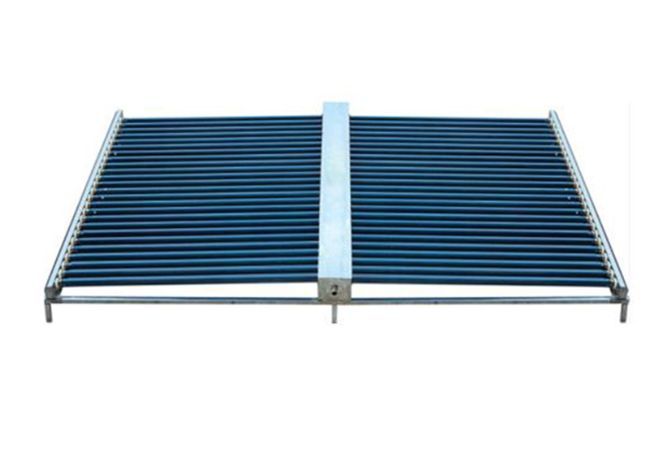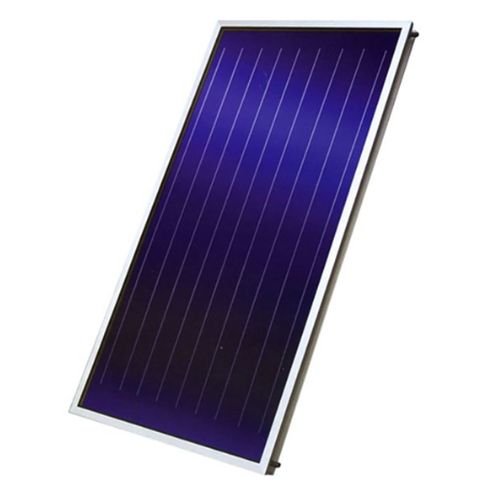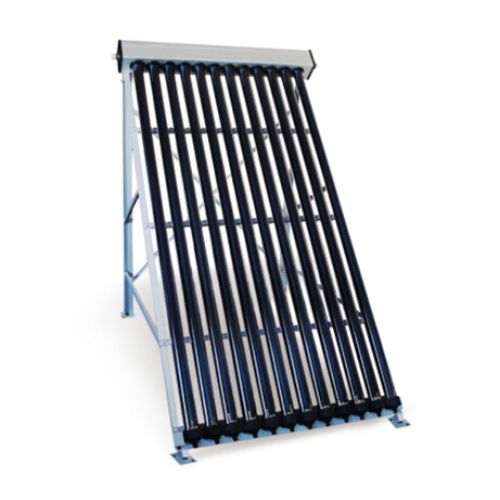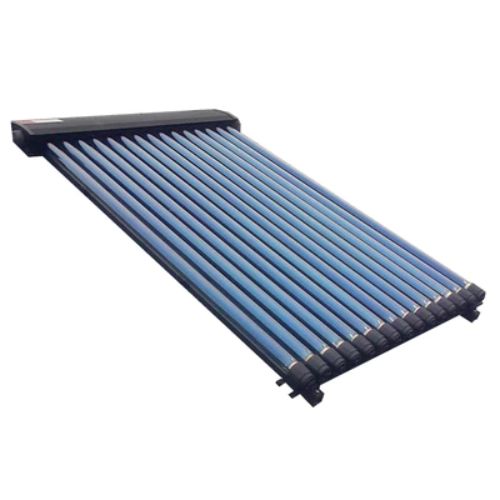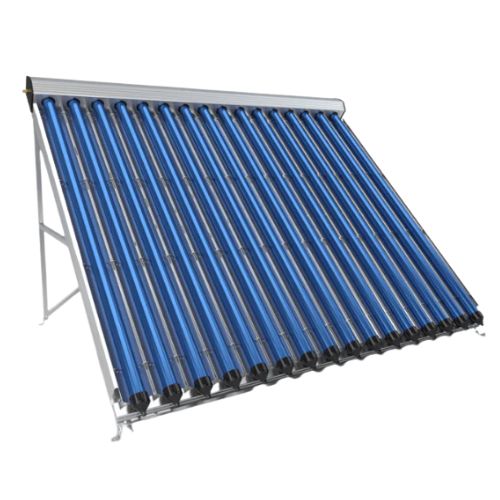Ensun-Non Pressure Solar Collector
Non pressure solar collectors are also called all-glass vacuum tube solar collectors. There has a selective coating with a high solar absorption rate. It is used for residential and large-scale commercial solar water heating projects.
- Low emission rate
- High heat efficiency
- Safe to use
- Cost-effective
- Long service life
- Low maintenance.
Invest Advanced ENSUN Non-Pressure Solar Collector
Non-Pressure Solar Collector consists of a manifold, tail bracket, solar vacuum tube, seal components, etc. Available in single-side vertical pipe design and double sides horizontal pipe. Solar energy usage is extremely safe and risk-free. All our products have a high-performance and efficient application. It has super insulation, a scientific and reasonable design. Made from all glass vacuum tubes which can resist cold and hot shock and high pressure.
ENSUN Non-pressure solar collector products surely reduce energy costs and provide environmental protection. It has a large quantity of heating water from 40 liters to big size of 600 litter. You can request a customized non-pressure solar collector for your business. Cost-effective solar collector with a high return on investment. Send your specifications today. Our team will help you find the right solution for your projects!
Why Choose ENSUN Non-Pressure Solar Collector?
Quality Materials – Our team use high-quality materials such as galvanized steel and stainless steel solar water heater. You can choose the best product for your needs.
Complete Service – From initial design, production report, container loading report, document confirmation, etc. We will help you the entire process to complete your purchase.
Full Certifications – All our products are made according to the strictest international standards such as CE, ISO, SGS, IEC, Solar Keymark, etc.
OEM Support – To boom your brand, we support custom product logo paint and logo print package cartons and installation manuals.
Rich Experience – Ensun has 10+ years of non-pressure solar collector production and sales. We have profound knowledge and skills you can trust.

- Hotel
- School
- Hospital
- Factory
- Apartment, etc.
| Vacuum tube | Borosilicate glass 3.3, Φ58×1800mm |
| Inner shell | Stainless steel ss304-2B |
| Outer shell | Color steel. stainless steel |
| Insulation layer | Polyurethane foam |
| Support | Stainless steel/ galvanized steel |
Related Product
Non Pressure Solar Collector
Non-pressure solar collectors are alternatively referred to as low-pressure solar collectors. They function like other solar collectors in the way they harvest solar energy for conversion into heat, nonetheless, they differ from high pressure collectors in that they function in normal or low pressure conditions.
These solar collectors feature less complex design which makes them low cost and suitable for small-scale and domestic and applications. They are popularly utilized in heating water for home use and pools as well as heating up internal spaces.

Advantages of Non Pressure Solar Collectors
There are several benefits accrued from using non-pressure solar collectors some of which are discussed herewith:
i. Comparing these solar collectors to high-pressure collectors, you find them more reasonably priced especially for small-scale applications like domestic use. Their less complex design and low part count means their manufacturing cost is lower.
ii. Fluid circulation in non-pressure solar collectors is independent of pumps or control systems thanks to the utilization of natural convection. As a result, these solar collectors are less likely to fail from mechanical malfunctions increasing their service life.
iii. The natural availability of solar energy makes use of these collectors highly efficient particularly for low and medium temperature needs.
iv. Installation of non-pressure solar collectors is straightforward capable of mounting over other structures like roofs. This is further enhanced by their lack of complicated systems such as pumps and sensors.
v. Solar energy is clean and renewable allowing for a reduction in fossil fuels reliance and emission of greenhouse gases. The non-pressure solar collector’s low carbon footprint makes them an eco-friendly option for heating applications.
vi. You can put non-pressure solar collectors to different heating tasks like heating internal spaces and domestic water. Pairing these solar collectors with thermal storage and/or other water heating systems can be useful in low sunlight conditions.
vii. The maintenance requirements for non-pressure solar collectors are often rather low given their mechanical simplicity. This limits maintenance efforts to routine checks, cleaning and inspections.
viii. The design of non-pressure solar collectors allow them to function for a long time in different weather conditions. Their endurance and durability are enhanced by the use of premium materials like corrosion-resistant metals and robust covers.
Non Pressure Solar Collector Components
Different parts make up a non-pressure solar collector and include the following:
a. Absorber: It is the most critical part of a non-pressure solar collector as it is where sunlight is absorbed. It is made of materials with excellent thermal qualities allowing maximum harvesting of solar radiation. Sometimes adding a selective coating increases thermal efficiency.
b. Cover: The cover encloses the absorber and is transparent to allow passage of sunlight while minimizing heat loss. It traps sunlight creating a greenhouse effect that keeps the atmosphere around the absorber hot.
c. Insulation: Insulation ensures heat loss from the non-pressure solar collector is minimal especially for the sides and bottom. Insulation material like mineral wool, fiberglass and polyurethane ensure the collector’s overall efficiency is higher than without.
d. Fluid Tubes: These are passageways for water or other working fluid allowing transport to the area of use from the absorber section. The tubes are also fashioned from highly thermally conductive material like copper for effective thermal performance.
e. Inlet and Outlet Connections: Fluid flows into and out of the collector via these connections without the use of pumps. This is as a result of the natural convectional flow stemming from heated fluid being less dense than cold fluid.
Non-Pressure Solar Collector Working Principle
A non-pressure solar collector makes use of solar energy by converting it into heat. This heat is then transferred to a fluid from which it will be harnessed for different uses.
The working of a non-pressure solar collector can be summarized as follows:
- The non-pressure solar collector absorbs solar radiation via an absorber plate which is designed to take up as much radiation as possible. The design includes construction with highly conductive materials and even selective application of dark coating. Furthermore, a transparent cover enclosing the absorber plate ensures the solar radiation is trapped via a greenhouse effect preventing heat loss.
- The absorbed heat raises the temperature of water or other fluid running through tubes attached to the absorber plate. The water/fluid rises naturally through the collector owing to buoyancy since it becomes less dense as its temperature rises. The hot liquid is then channeled for storage or direct use through a piping system.
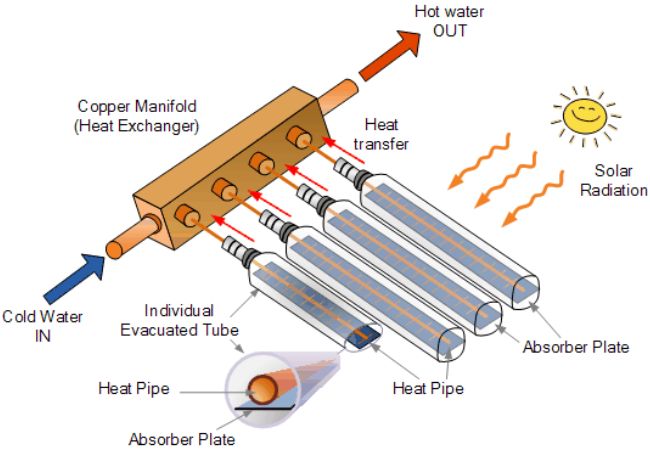
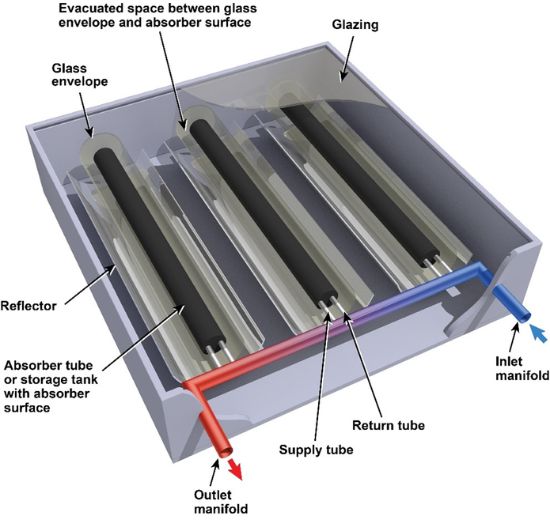
Design Features of Non Pressure Solar Collector
Different design elements are used for non-pressure solar collectors to increase their performance and efficiency. Some typical design elements observable in non-pressure solar collectors are:
i. Application of a selective coating to the absorber plate increases solar radiation absorption while reducing heat loss. This coating often comprises materials with high absorption capability and low thermal emittance.
ii. The cover used for the absorber is typically transparent and of glass or plastic material. It is useful in curbing heat loss via conduction and convection with the transparency permitting maximum transmission of sunlight.
iii. Insulating the collector’s sides and area around the absorber plate lowers heat loss consequently raising the collector’s efficiency. Heat loss to the surroundings is reduced thanks to using insulating materials with poor thermal conductivity.
iv. For effective heat transfer, the collector’s fluid flow channel l is designed to maximize contact between the absorber plate and fluid. The path may be fashioned to promote even fluid distribution and reduce pressure drops.
v. An airtight enclosure is ensured for the collectors frame to reduce convective heat transmission and air leakage. Such an enclosure also ensures the internal features are secured from adverse weather conditions such as heavy rainfall.
vi. Providing a strong frame constructed of durable materials like aluminum or stainless steel offers structural stability and bears the collector’s weight.
vii. Non-pressure solar collectors are installed and positioned such that they have maximum exposure to the sun. Ideal locations are the roof and elevated structures where brackets and other mounting hardware are employed. Basing orientation to the tilt angles and latitude is crucial in capturing maximum solar energy.
viii. Including drainage and ventilation systems for non-pressure solar collectors can ensure water doesn’t build up inside the collector and avoids condensation. Ventilation systems allow surplus heat or air escape in the event of a buildup.
ix. Integrating these solar collectors with thermal storage systems improves energy efficiency of by allowing storage of excess thermal energy. This allows for later use when an absence of sunlight is experienced.
Installation of Non Pressure Solar Collector
Several steps are undertaken to appropriately install non-pressure solar collectors as outlined below:
- A comprehensive evaluation of the installation site helps in ascertaining its appropriateness for a solar collector. This step considers the orientation of roof, its stability, exposure to sunlight, shading and local regulations.
- Prepare the mounting framework when installing the solar collector on a rooftop or other elevated structure following appropriate procedures. The structure should be solid enough to support the solar collector’s weight.
- Place the solar collector where tilt and orientation will most likely maximize solar exposure throughout the day.
- Using the proper mounting hardware, firmly fasten the solar collector to the mounting framework limiting any movement or instability.
- Connect the non-pressure solar collector’s input and outlet pipes to the solar thermal system depending on plumbing needs and system design. Ensure leak-free connections by utilizing appropriate fittings like threaded and compression connectors alongside sealing.
- Add insulation to the collector and piping to reduce heat loss during fluid circulation utilizing material with excellent insulation qualities. In doing this be elaborate in the coverage to avoid gaps that could succumb to the elements.
- Connect any electrical parts including sensors or control systems as per the industry standard and manufacturer instructions. Also adhere to the local safety requirements for electrical wiring applying standard techniques.
- After successful installation and connection of the non-pressure solar collector, run a test to ensure it functions as required. If there are no leaks, with smooth running of the system give the installation a clean bill for operation.
Maintenance of Non Pressure Solar Collector
A non-pressure solar water heater must be properly maintained to offer an extended period of service. Some essential considerations towards maintenance are suggested below:
a. Conduct routine checks on the solar collector to identify indications of wear, corrosion, or damage. Examine the fluid connections, insulation, cover, absorber plate checking for cracks, leaks, or loose parts that could compromise functionality.
b. Prevent obstruction of sunlight that hampers penetration to the absorber plate by keeping the cover clear of dirt and other matter. Use a gentle detergent and soft clothing or sponge in cleaning, avoiding harsh and/or abrasive products that could deface the surface.
c. Monitor the flow of fluid in the collector to make sure there are no snags in its path. Verify the fluid lines for blockages or airlocks that could prevent appropriate heat transfer.
d. Examine the integrity of the insulation, fixing or replacing broken insulation parts to stave away heat loss and boost efficiency.
e. Check for fluid leakage within the collector or connected plumbing regularly as they may reveal faulty fittings or seals. This could instigate thermal loss and need to be addressed immediately by fixing or replacing the damaged parts.
f. Inspect the fluid connections, seals and gaskets surrounding the collector cover and other access points ensuring sealing is in place. The seals should be solid and devoid of any gaps or flaws that would permit leakage of fluid or air.
g. Installing a monitoring system allows you to keep tabs on the collector efficiency and that of the system collectively. Some aspects to monitor include flow rates and fluid temperatures which may help single out irregularities.
h. Schedule a regular visit by a professional for depth servicing and inspection given their broader knowledge base and understanding.
i. When handling hot fluids or operating at heights, take the necessary safety measures such as using gloves and harnesses.
Non Pressure Solar Collector Uses
There are several areas where non-pressure solar collectors are utilized ranging from homes, places of business and industries. Their use in these areas can include any of the following:
a. Many homes utilize non-pressure solar collectors for heating water for household use or integrating with an alternative heating system. This greatly reduces the energy requirements per household freeing up the grid demand.
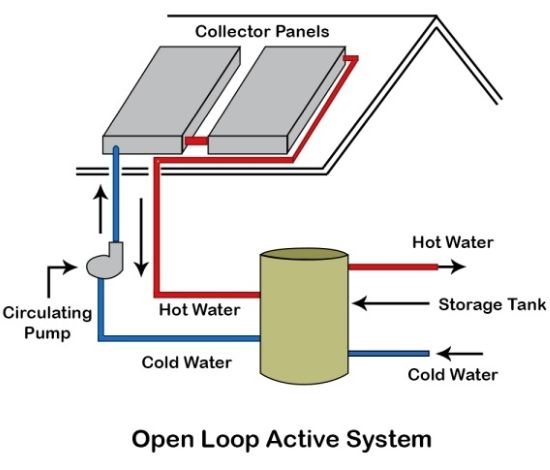
b. Non-pressure solar collectors are a good option to keep water for swimming pools and jacuzzis at comfortable temperatures. It is a convenient option compared to conventional heating systems which consume a lot of energy racking massive power bills.
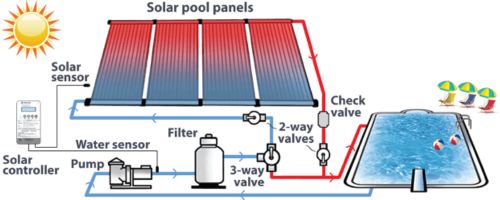
c. Off-grid locations with difficulty in accessing traditional energy sources and mobile homes like RVs can utilize these collectors for their heating needs.
d. Some industrial processes utilize non-pressure solar collectors for their thermal needs like preheating ingredients, drying substances and even warm storage conditions. Going with these solar collectors instead of traditional energy sources lowers production costs.
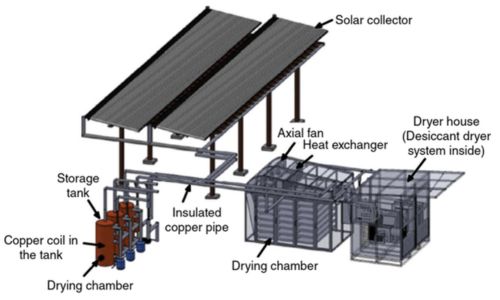
e. These solar collectors can be employed in agricultural applications like heating greenhouses or generating warmth for granaries. They can offer the heat required to keep greenhouse growing conditions ideal for excellent crop performance.
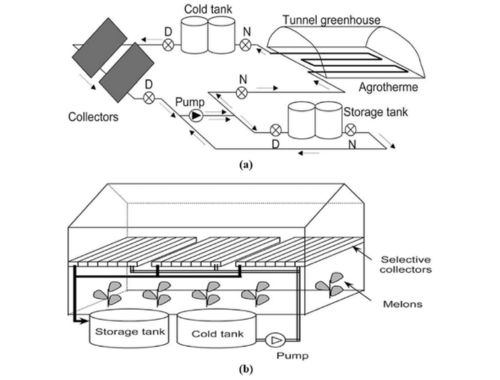
f. When there’s need to heat internal spaces during cold seasons like winter, non-pressure solar collectors are an excellent solution. A heat exchanger or radiant heating system encompassing these collectors can be used in heating air for residential and commercial buildings.
Limitations of Non Pressure Solar Collectors
While there are several benefits to employing non-pressure solar collectors, some of the drawbacks you need to consider are highlighted below:
- Extreme weather conditions, such as heavy rainfall and strong winds, may initiate a reduction in the efficiency of these collectors.
- Non-pressure solar collectors consume more surface area than high-pressure collectors to produce an equal amount of heat. This can limit their suitability where aesthetics are an issue or if space is at a premium.
- Thermal output of non-pressure solar collectors is lower than their high pressure counterparts, thus, obstruction of the absorber greatly hampers efficiency. As a result, this collector type will require more cleaning operations to maintain peak performance.
- Unlike high-pressure solar collectors, these particular collectors typically operate at lower temperatures delivering low to moderate heat for heating applications. They are therefore best suited for an integrated system involving conventional heating systems or superior solar collector designs.
- Weather conditions directly impact the performance of non-pressure solar collectors. Since the sun is the main energy source, conditions obstructing sunlight like cloud cover will reduce solar absorption and hence thermal output.
- When using non-pressure solar collectors, the need for freeze protection is necessary in colder climates. Freeze protection prevents solidification of the working fluid that could result in collector damage. However, employing freeze protection adds to the system cost and complexity.
- Where you have this collector without internal thermal storage, you are liable to insufficient thermal output in the sun’s absence. It therefore only works conveniently with a backup heating system or storage for durations without sunlight.
Conclusion
Non-pressure solar collector performance and efficiency varies with factors like system design, location, and exposure to sunlight. However, these collectors are adaptable and can be utilized in various applications, producing sustainable and renewable thermal energy.




